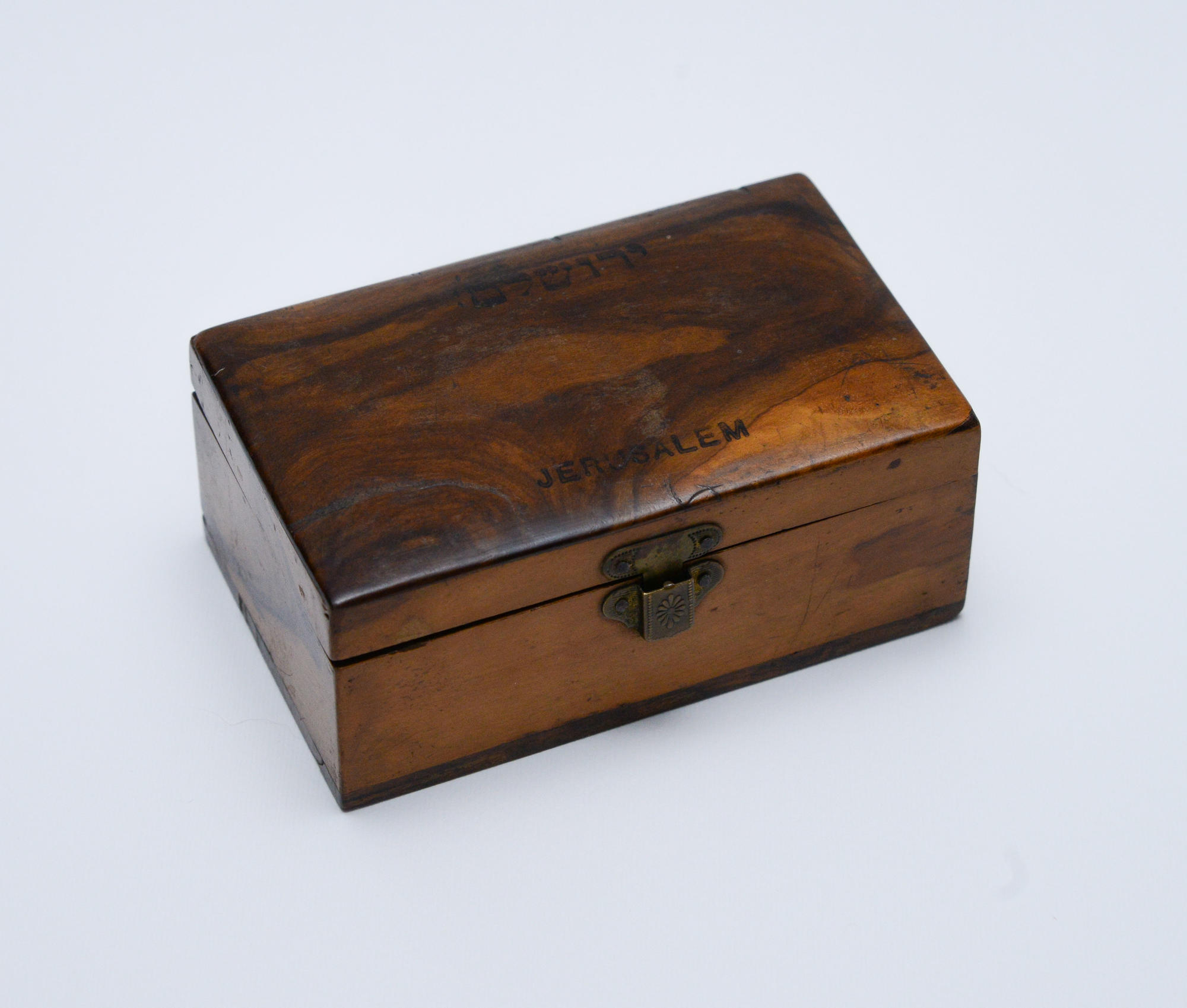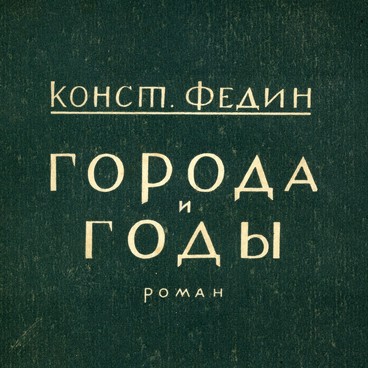A wooden box of rectangular shape made out of cypress with a hinged lid finished with walnut veneer and bearing a curly copper latch with a stamped socket. The outside of the lid bears an inscription in Latin letters at the bottom: ‘JERUSALEM’ and a similar Hebrew inscription at the top: ‘ירושלים’. The inner surface is covered with blue satin. Caskets of this kind were made in craft workshops in the Holy Land. They were purchased by numerous pilgrims to commemorate their stay at the world’s most important shrines. A wooden box of rectangular shape made out of cypress with a hinged lid finished with walnut veneer and bearing a curly copper latch with a stamped socket. The outside of the lid bears an inscription in Latin letters at the bottom: “JERUSALEM” and a similar Hebrew inscription at the top: “ירושלים”. The inner surface is covered with blue satin. Caskets of this kind were made in craft workshops in the Holy Land. They were purchased by numerous pilgrims to commemorate their stay at the world’s most important shrines.
The casket came to the museum from a resident of the city of Engels, Ksenia Volkova, the niece of the writer Zamyatin. Evgeny Ivanovich Zamyatin (1884–1937) was a Russian writer, critic, publicist, and screenwriter. She recounted a family legend about this object in the words of her mother, Alexandra Ivanovna. Zamyatin studied at the shipbuilding department of the St. Petersburg Polytechnic Institute. In the summer of 1905, Zamyatin apprenticed on the ship Rossiya, which was travelling from Odessa to Alexandria. During this journey, the future writer visited Jerusalem, one of the world’s oldest cities. As a gift to his sister, he bought a wooden cypress box. Alexandra Ivanovna saved it along with photographs of her childhood and youth. It was the little that she had to remember her brother by.
Zamyatin described the journey in his autobiography. Work at sea provided the future writer with plenty of vivid impressions and included Constantinople with its mosques, dervishes, bazaars, the white marble embankment of Smyrna, the Bedouins of Beirut, the white Jaffa surf, black-green Athos, the plague at Port Said, yellow-and-white Africa, Alexandria with its English policemen, sellers of stuffed crocodiles, the famous Tartush and much more. And then there was amazing Jerusalem, special and separate from everything else, where he spent a week with the family of an Arab acquaintance.
Next to the casket, Zamyatin’s book Impious Stories is exhibited with a dedicatory inscription to Fedin, testifying to the close relations between the two writers.



